Hamsters show us a lot through their behaviors. Getting to know your pet's habits can help you learn about their personalities and how to care for them. This article will answer what it means when a hamster is standing up.
If you notice your hamster standing, they may be feeling one of the following:
- Alert and curious
- Threatened
- Seeking attention
Keep reading as we discuss these possibilities and clues into which your hamster may be feeling. We will answer how to know if your hamster feels stressed or excited.
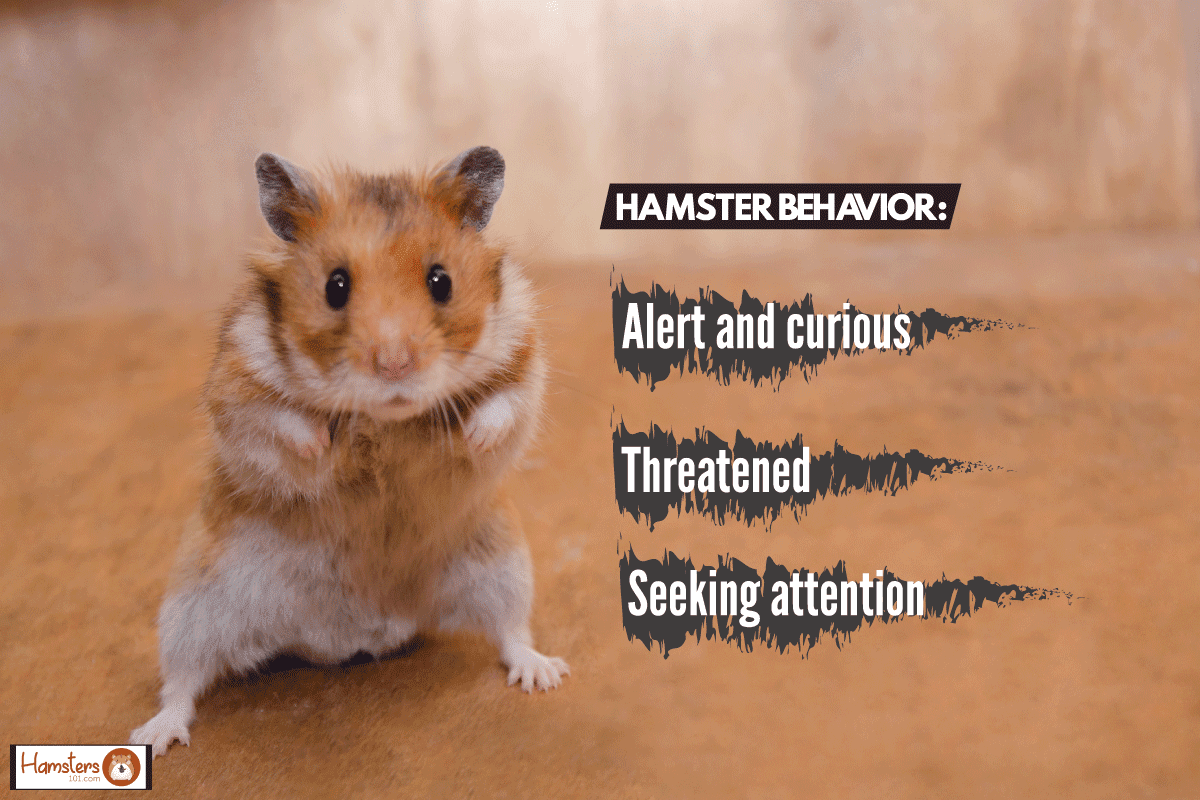
Why Is My Hamster Standing Up?
A hamster shows much of what they're feeling through body language. If you are new to owning a hamster, you might discover their body language comes with many quirks and patterns.
Seeing your hamster standing up might be alarming if you have never seen them do it before. Additionally, if this is a new behavior, you might be wondering what is causing it.

Although it can be, a standing hamster is not always a reason to be alarmed. Getting familiar with why they are standing will help you determine if you should be worried or not.
Luckily, there is plenty of explanation behind hamster behavior, and we are here to help break this one down. Let's take a closer look at the reasons why your hamster might be standing up.
Alert And Curious
Standing can be completely normal behavior for a hamster. These small pets are inquisitive animals, and standing can allow them to gather more information on their surroundings.
Do you notice your hamster start to stand when they hear a noise around their enclosure? This behavior can mean they are trying to understand better what is happening.
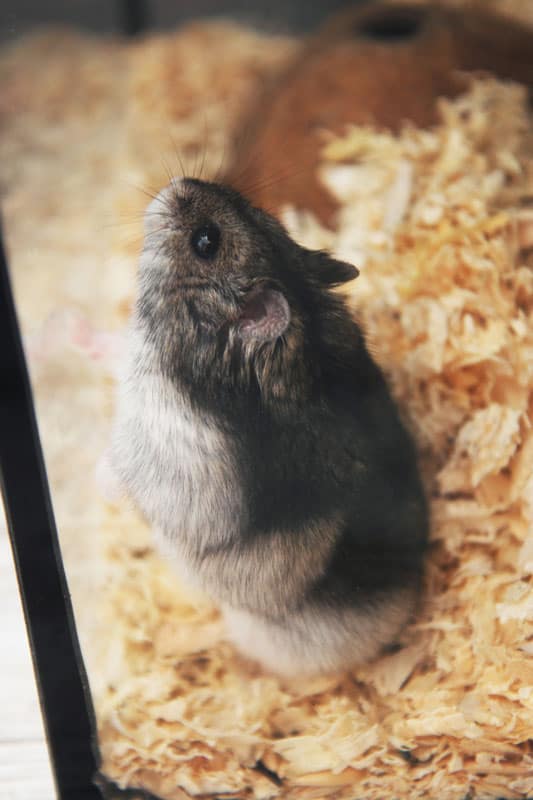
Hamsters don't have the best eyesight. Therefore, they depend on their other senses, such as smell, taste, and feel, to figure out what is happening around them.
Due to this poor eyesight, a standing hamster that is curious may look like they are just staring off into space. This can be normal as they are taking time to tune into those other senses.
When a hamster is standing and curious, you might also note them sniffing the air. Take a look at your hamster's posture. Are they relaxed or stiff? A relaxed posture while standing indicates your pet is not feeling threatened.
A curious hamster is nothing to be concerned about. Curiosity is a behavior that should be encouraged in your pet, as it aids in their environmental enrichment and overall wellness.
Threatened
There are times a hamster standing up indicates aggressive behavior. A hamster may feel threatened if they quickly stand on their hind legs and put their arms up, almost as if they are making a fist.
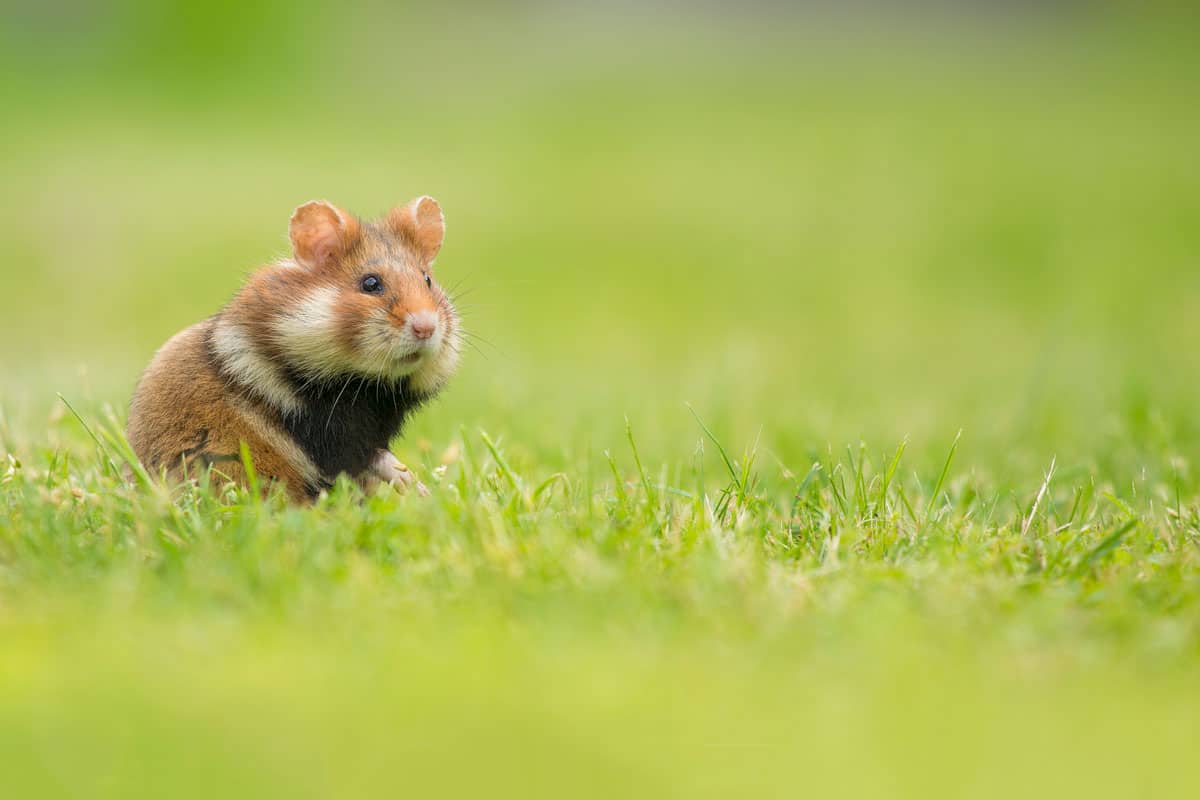
If you quickly approach your hamster, and they take this position, do not pick them up. Your pet is trying to communicate that they are on the defense, and a move to handle them can lead to you getting bit.
A hamster may feel this way if a loud noise or quick movement happens around them. Additionally, if something has changed in their environment, this can be stressful for a hamster.
Furthermore, a hamster showing aggression when standing may also start to hiss. As if to say, back away from me. Hissing can be accompanied by excessive salvation or drooling.
If your hamster shows signs of aggression, it is time to assess the underlying cause. You should take steps to decrease stress in their environment and create a space where they feel comfortable and safe.
Allowing the hamster to live in high-stress situations can further increase aggressive behaviors and stress levels.
Seeking Attention
Last, standing up can be a hamster's way of seeking attention. This goes along with their curious personalities. Do you notice your hamster standing near the cage door or walls when you enter the room?
If your hamster has been comfortable interacting with you, standing can be their way of showing you they are interested in what you are doing and want to be a part of it.
Standing as attention-seeking can come with other behaviors such as jumping in the cage or climbing the bars. This attention-seeking behavior is normal for a hamster.
You can spend time with them near their cage or take them out and let them roam in a ball. Additionally, you can give treats or their meal if this is what they are expecting.
Take time to monitor your pet when they move into this standing position. Watching their body language and assessing the environmental factors can help you determine what motivates the behavior.
Along withstanding, there are other behaviors to be aware of when caring for a hamster. We will go into detail about these behaviors next.
Read more on our blog post, "Why Does My Hamster Jump In His Cage?"
How Can I Tell If My Hamster Is Excited Or Stressed?
While you are taking note of your hamster's behavior, it is helpful to know when they are feeling stressed or when they are feeling excited. Knowing the difference can indicate that your hamster may be experiencing a problem.
On the other hand, knowing when they are excited can teach you what your pet enjoys. Let's look at the differences between a stressed hamster and an excited one.
Signs Of Stress
Knowing the signs of a stressed hamster can help you know when something needs to change. There could be something bothersome in their habitat, a change in their health, or something outside their home causing stress.
Signs of stress in a hamster include the following:
- Hyperactivity
- Biting cage bars
- Excessive scratching or gnawing
- Teeth baring
- Drooling
- Hair loss
- Muscle tremors or rigidity
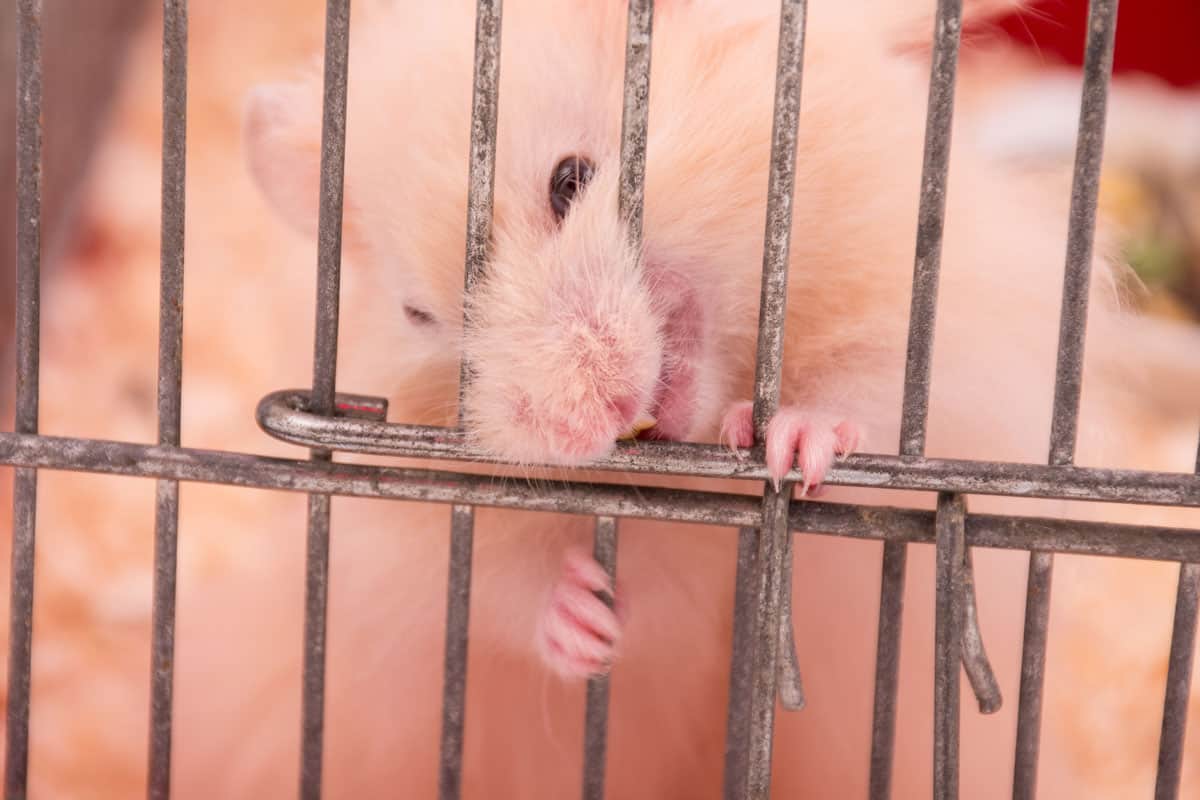
Along with the above behaviors, any drastic change in a hamster's habits or daily routine can indicate your hamster is feeling stressed. If you notice these changes, you will need to address the underlying issues.
Have you ruled out all possibilities of environmental and mental stress? It may be time to seek help from a veterinarian to ensure your hamster is not experiencing a decline in their health.
Signs Of Excitement
Hamsters are expressive creatures and do show excitement. Your hamster may become excited around mealtime, when you are giving a treat or a new toy, or when they notice you approaching the cage.
Signs your hamster is excited include the following:
- Sprinting up to the cage door or walls
- Stretching
- Playing with toys or bedding
- Using their exercise wheel
- Attempts to interact with you
- Positive response to your voice
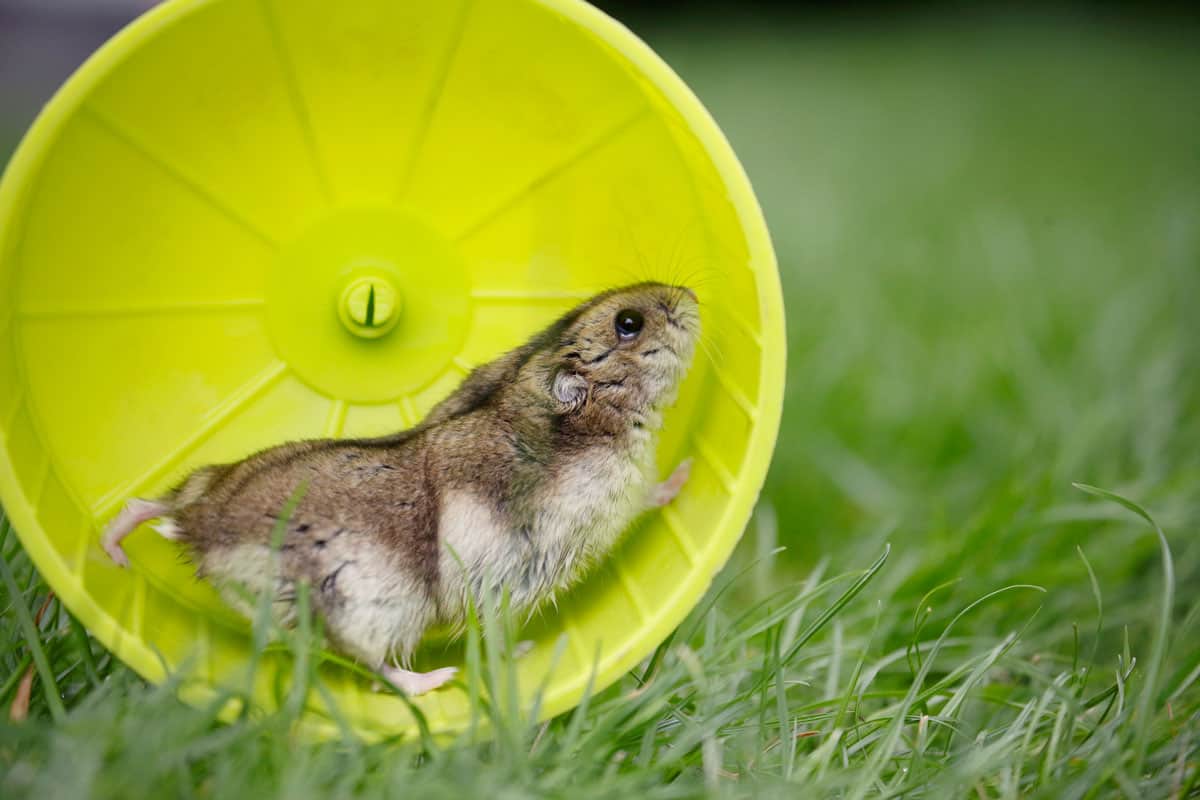
A hamster, excited about what is happening around them, is generally a happy hamster. You can find what excites your hamster and try to implement those things into their daily routine.
Learn more in our blog post, "25 Ways To Make Your Hamster Happy."
What Is Abnormal Hamster Behavior?
Being able to point out abnormal behavior in your hammie is a must-have skill for pet owners. Knowing what is abnormal early will help you stay on top of any issues they may experience.
So, what should you be looking out for? The first sign of abnormal behavior is a change in your hamster's usual routine. They may be sleeping at odd hours or have a change in their eating habits.
Furthermore, it is normal for a hamster to burrow but abnormal to hide constantly. Hiding is especially abnormal if your pet is doing this during hours they are ordinarily awake or playful.
Other abnormal behaviors to look out for include:
- Heavy breathing
- Not eating or drinking at all
- Not chewing food
- Sneezing
Severe symptoms that should cause alarm include diarrhea, weight loss, discharge from the eyes, ears, or mouth, and tumor-like growths. If you notice any of these issues, you need to schedule a check-up with your veterinarian.
In Summary
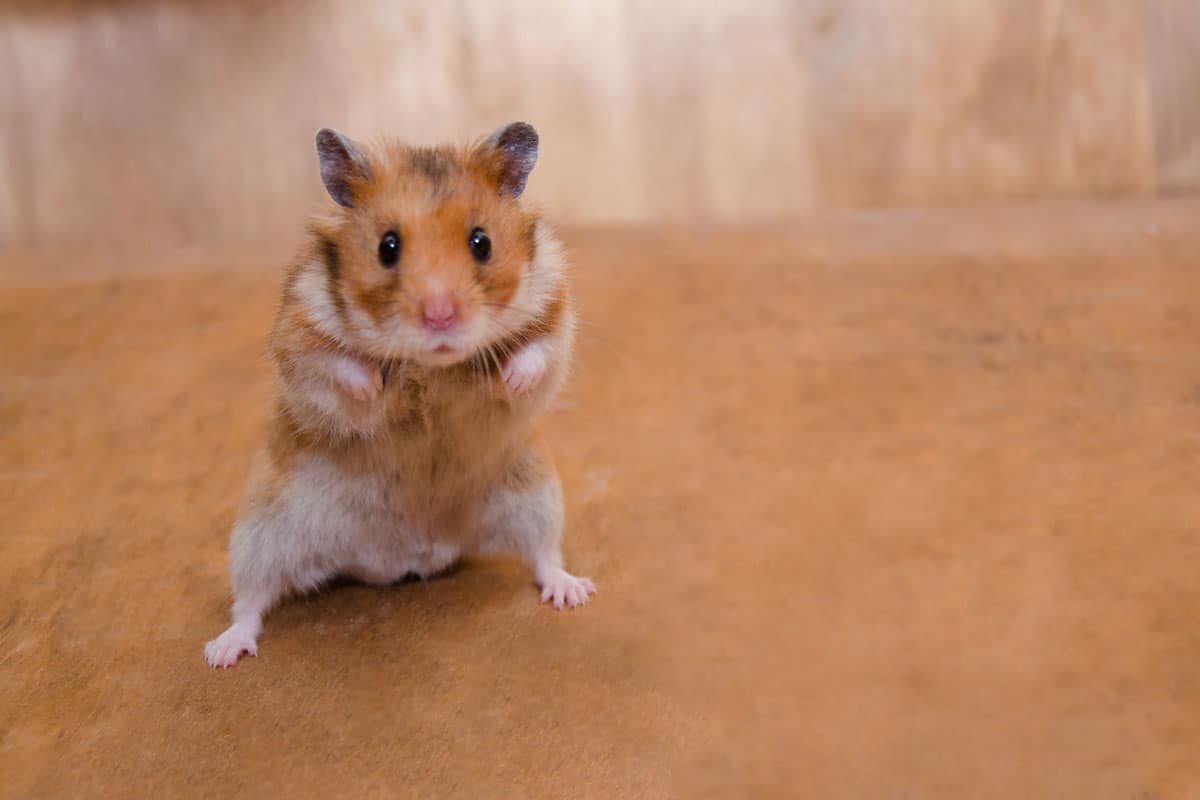
Your hamster may be standing up for a normal reason like excitement, or they are seeking attention. However, you want to look out for aggression in some cases. We hope you found this article helpful when breaking down this behavior.
Are you looking for more insights into your hamster's behavior? Have a look through our blog post, "Is My Hamster Bored? [And What To Do About It]."




she keeps biting the bars on the cages and I don’t how make her stop doing that
Hi, thank you so much for this post, it really helped me figure out what’s happening with my hamster. Minor concern though, hamster balls may not be safe for hamsters and some hamsters are feeling threatened and stressed using them, please look into that. Once again thank you for this post.